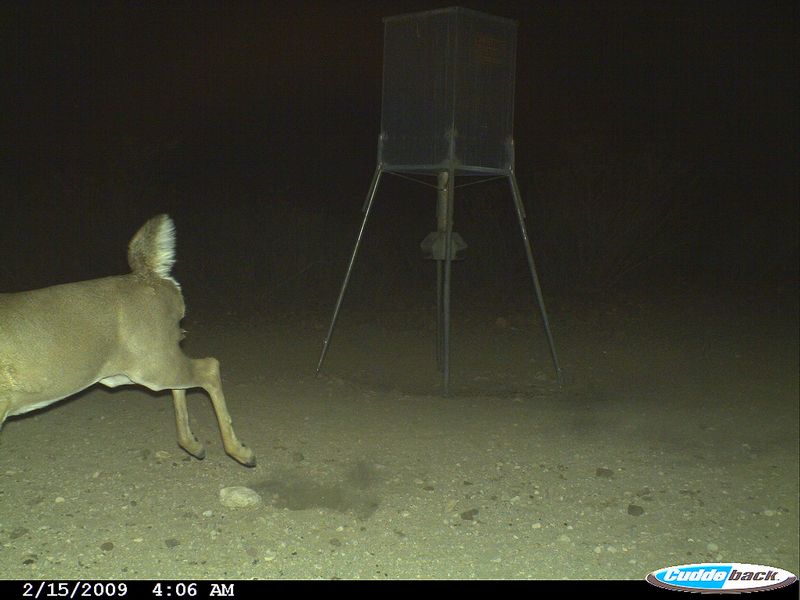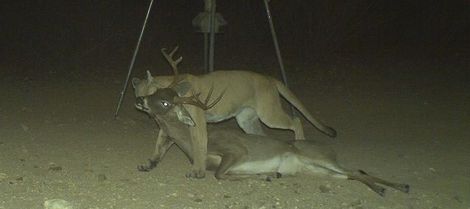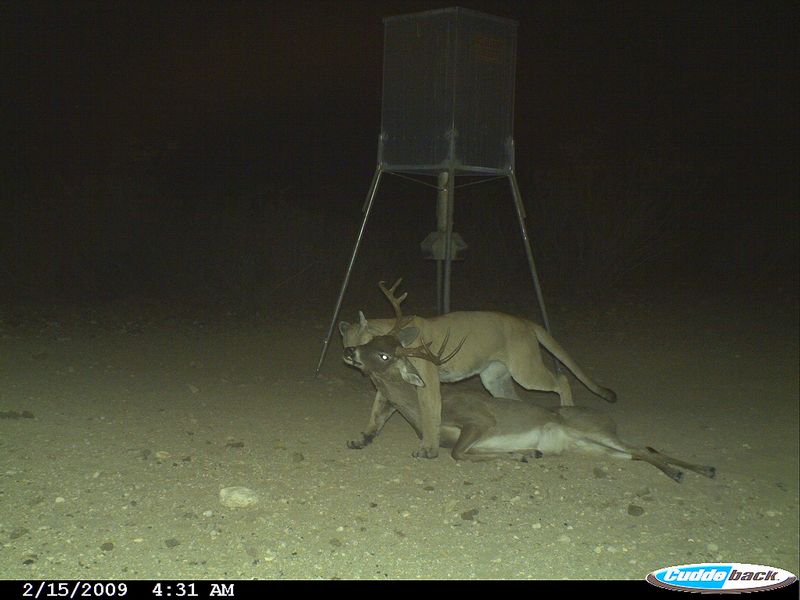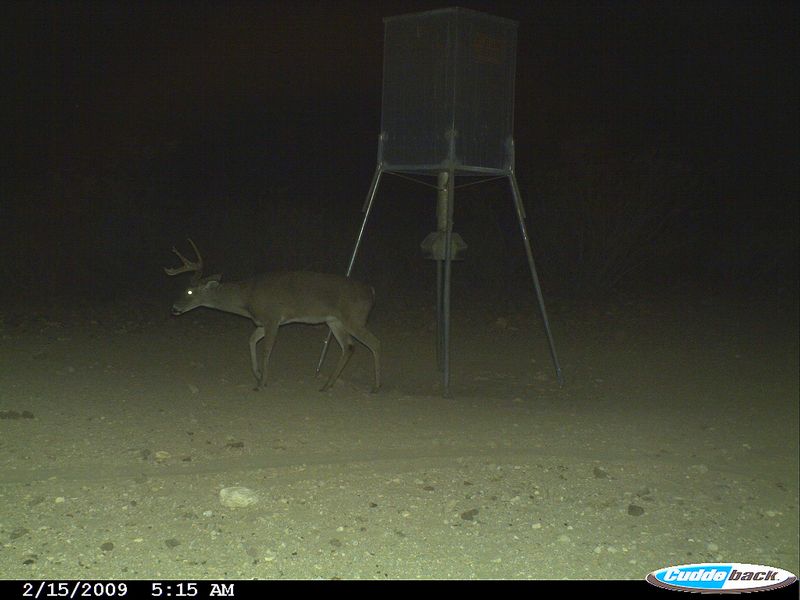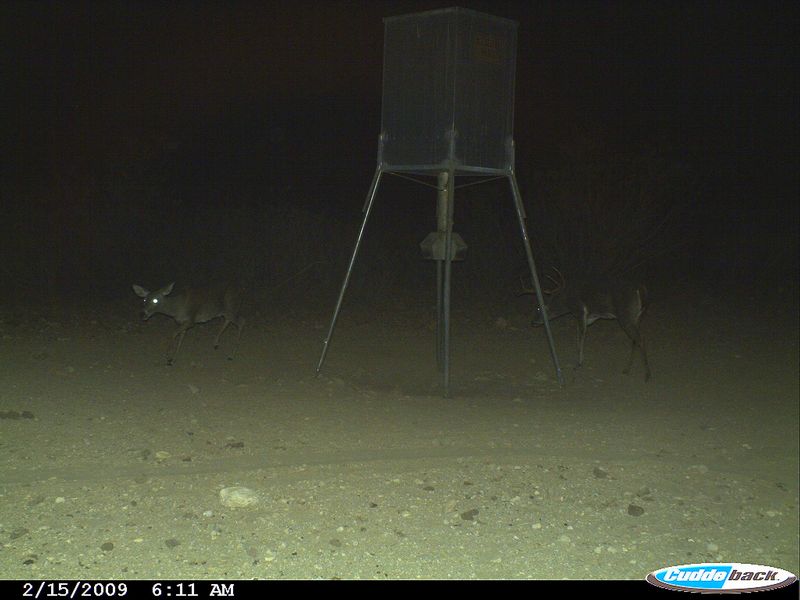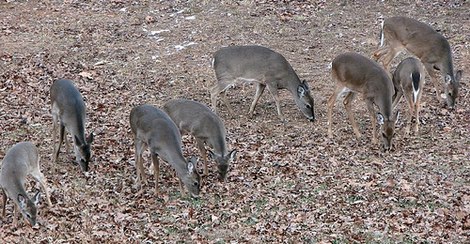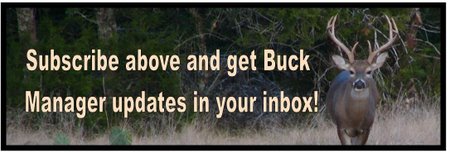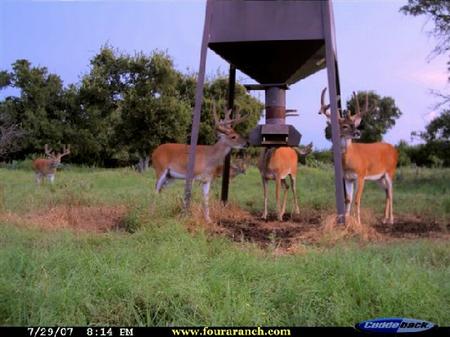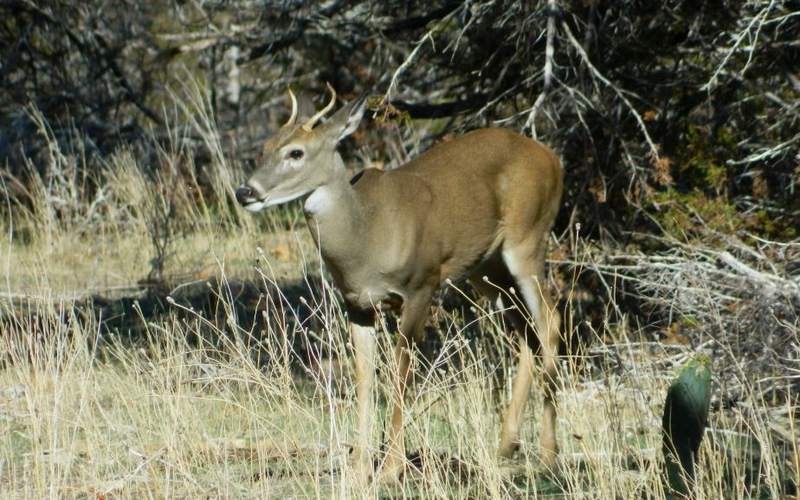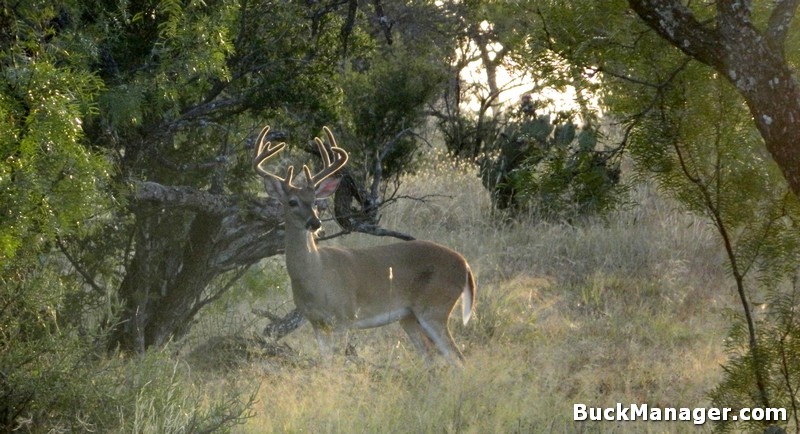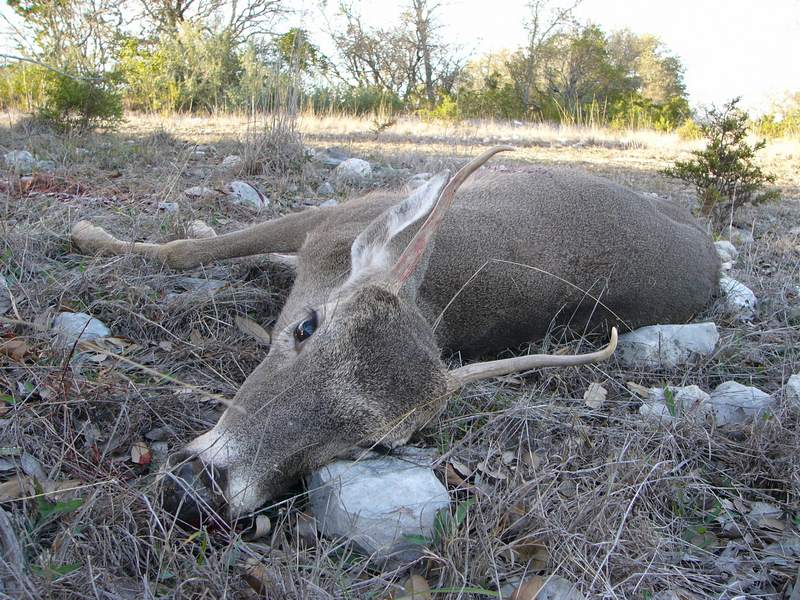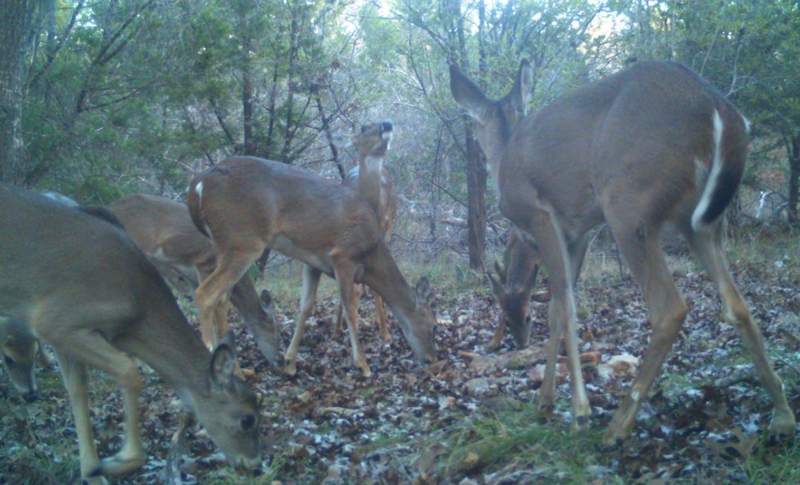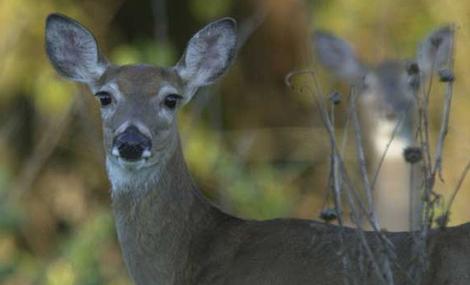Mountain Lion Dragging Buck
Have you seen the game camera photo of a mountain lion that killed a buck at or near a feeder? It seems quite amazing that the lion and his kill were caught on camera. However, the mountain lion dragging buck photo appears to be legit. It’s rather lucky photo for the owner of the game camera, but not as fortunate for the buck.
Readers of this site know that I normally write about deer management and anything related to hunting white-tailed deer. In addition, I do my best to get the facts correct before publishing content that I feel is accurate and helpful to hunters and landowners managing the deer and habitat found on their hunting properties.
Well, about a month ago I wrote an article that featured the photo below. It’s a perfect game camera photo of a mountain lion dragging a dead buck directly in front of a feeder. It seemed so perfect, I stated that surely the photo was a fake. As it turns out, the mountain lion dragging a buck photo is not fake. Rather, it’s an actual, amazing trail camera photo taken on a ranch in South Texas.
Mountain Lion Kill Caught on Camera
Every deer hunter that has spent any amount of time in the woods, or more appropriately around a campfire with other hunters, has heard stories related to mountain lion sightings. This can include the alleged black panther sightings that your buddy/uncle/friend/nephew claims he saw, too. The stories always get better as the night goes on.
One of the best things about getting outdoors and into the wildlife woods is that you really never know what you are going to see. And speaking from experience (and the mountain lion photos further below), there are some amazing things going on outside all of the time. After all, nature never really sleeps.
Photos, like campfire stories, are not always truthful. Before writing the first article about this photo of a mountain lion dragging a buck, I did a little research regarding the photo. If this photo had been faked, it would not have been the first. To make a long story short, someone initially admitted that they had “made” the photo. Just to get some attention, someone actually claimed to have faked a real-to-life photo. Wow.
Mountain Lion Dragging Buck After Kill
As it turns out, the real owner of the mountain lion photo saw the article, contacted me, gave me the real story that took place on his South Texas property and even provided me with additional photos to corroborate the mountain lion kill.
The ranch owner even said he found the whitetail buck’s head and remains about 6 weeks after these game camera photos were taken. He confirmed that the buck had been killed by the lion.
The photos below are in time succession and show a deer fleeing the area prior to the buck being killed. You can even see the drag marks in the dirt after the mountain lion walks right in front of the game camera. A truly remarkable occurrence, especially since it was caught on film. A special thanks to Chet Markgraf for his story and these photos!
Photos Document Lion & Whitetail Buck
